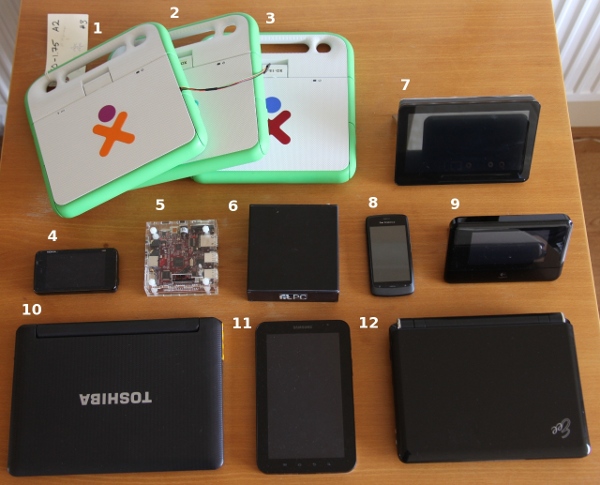Its been a some what mixed year for me personally and I certainly won’t be massively disappointed to see the end of 2011. In Fedora land the year has been completely full on!
The first major event that kicked off 2011 for me in Fedora was FUDCon Tempe which as always was brilliant. Its always awesome to catch up with a lot of Fedora Friends and to drive forward various bits of the project that are sometimes easier done face to face, whether it be in a session or at FUDPub over a beer or two! It was at Tempe that our fearless leader threw down his first challenge of the year to me… to blog about what I’m doing in the land of Fedora on a weekly basis. I didn’t quite meet this goal but have still averaged a post every fortnight.
From April a massive amount of my time was taken up with helping the Fedora ARM in particular getting Fedora 14 built for the XO 1.75 but also massively fixing packages upstream to build on ARM. With the F-14 release for the XO out I’ve been concentrating on F-15+ and later for both hard and soft floating point. The ARM project still continues to consume massive amounts of time and has basically covers a lot of the things I wanted to achieve as part of the Fedora Mobility SIG.
May saw me head off to the excellent Red Hat Summit for the second time. I was there for work and as always its very useful for the type of work I do for my $dayjob. I helped out on the Fedora booth and as always spent quite a bit of time with a number of Fedora contributors. It was there that our fearless leader convinced me that standing for The Fedora Board was also a good idea.
Fedora 15 was next up on the list, of course. A great release with gnome-3 and all sorts of other goodies. Not so good for Sugar on a Stick which had massively broken networking 🙁
October saw me attending FUDCon Milan which was a rather shorter than some FUDCons but great as always.
Fedora 16 was much more successful for Sugar on a Stick and we shipped probably the best release ever. In fact I think Fedora 16 was an awesome release.
I’m looking forward to 2012 greatly, both in the land of Fedora and in my personal life. I’m looking forward to seeing ARM progress onwards and upwards and hopefully make it to a primary architecture in the coming year. I’m not one for resolutions, I think ongoing reviews are much better so I look forward to working with all my Fedora friends throughout the coming year.
